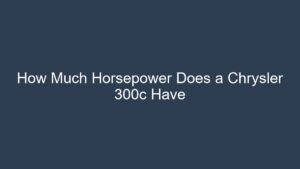
Contents
- How Heavy Is the Nissan Leaf? Unpacking the Weight of Nissan’s Popular EV
- The Core Question: How Heavy is a Nissan Leaf?
- 🛒 Recommended Product
- Why Does the Nissan Leaf’s Weight Matter So Much?
- Factors That Influence Your Specific Leaf’s Weight
- Step-by-Step: How to Find the Exact Weight of Your Nissan Leaf
- 🛒 Recommended Product
- Tips for Managing Your Leaf’s Weight and Performance
- Common Mistakes to Avoid
- Conclusion
- 🛒 Recommended Product
- FAQ
How Heavy Is the Nissan Leaf? Unpacking the Weight of Nissan’s Popular EV
Ever wondered about the true heft of your Nissan Leaf? It’s a common question, and one that holds more significance than you might think, especially for an electric vehicle. Understanding your Leaf’s weight isn’t just a fun fact; it impacts everything from its range and performance to safety and tire wear.
In this detailed guide, we’ll dive deep into the Nissan Leaf’s weight, exploring what contributes to it, why it matters, and how you can find the precise figures for your specific model. We’ll also share valuable tips and help you avoid common mistakes along the way.
The Core Question: How Heavy is a Nissan Leaf?
Let’s get straight to the point! The Nissan Leaf, depending on its generation, trim level, and battery size, generally weighs in at:
🛒 Recommended Product
- First Generation Nissan Leaf (2011-2017): Typically ranges from 3,278 lbs (1,487 kg) to 3,430 lbs (1,556 kg).
- Second Generation Nissan Leaf (2018-Present): Generally ranges from 3,357 lbs (1,523 kg) to 3,889 lbs (1,764 kg).
As you can see, there’s a notable difference! The second generation, especially the Leaf PLUS models with larger batteries, are understandably heavier.
Key Concept: Curb Weight vs. GVWR
When we talk about a car’s “weight,” we’re usually referring to its Curb Weight. This is the weight of the vehicle with all standard equipment, fluids (like coolant and brake fluid), and a full tank of fuel (or a fully charged battery in an EV), but without any passengers or cargo.
Another crucial number is the Gross Vehicle Weight Rating (GVWR). This is the maximum permissible total weight of your fully loaded vehicle, including the curb weight, all passengers, and all cargo. Never exceed your Leaf’s GVWR!
Why Does the Nissan Leaf’s Weight Matter So Much?
For an EV like the Nissan Leaf, weight is a critical factor influencing several key aspects of its operation:
- Range and Efficiency: This is perhaps the most significant impact. A heavier car requires more energy to move, especially during acceleration. This means a heavier Leaf will generally have a slightly shorter driving range compared to a lighter one under similar conditions, as its battery needs to work harder.
- Performance: While electric motors offer instant torque, a lighter vehicle will always feel more nimble and accelerate quicker than a heavier one with the same power output. Weight affects your Leaf’s acceleration, braking distance, and overall handling.
- Tire Wear and Selection: Heavier vehicles put more stress on tires. Understanding your Leaf’s weight helps you ensure you have tires with the correct load rating and maintain proper inflation to prevent premature wear and ensure safety.
- Suspension System: The suspension components are designed to handle a specific range of weight. Overloading your Leaf can strain the suspension, leading to a less comfortable ride and potential damage over time.
- Safety: While EVs are designed with safety in mind (the heavy battery pack often sits low, contributing to a low center of gravity), vehicle weight plays a role in crash dynamics. Knowing your car’s weight helps emergency responders in certain situations.
- Towing (or lack thereof): Most Nissan Leaf models are not rated for towing, and understanding the vehicle’s inherent weight and structural design explains why. Adding a trailer would dramatically exceed its designed load capacity.
Factors That Influence Your Specific Leaf’s Weight
Not all Nissan Leafs are created equal! Several factors contribute to variations in their weight:
- Battery Size: This is arguably the most significant factor. The larger the battery pack (e.g., the 62 kWh battery in the Leaf PLUS compared to the standard 40 kWh), the heavier the vehicle will be. The battery is the single heaviest component in an EV.
- Trim Level: Higher trim levels often include more features, such as advanced infotainment systems, premium sound systems, power seats, and additional safety sensors. These extra components, while individually small, can add up to a noticeable amount of weight.
- Generational Changes: As mentioned, the second-generation Leaf is generally heavier than the first, incorporating design improvements, safety enhancements, and larger battery options.
- Optional Equipment: Sunroofs, larger wheel sizes, and other factory-installed options can incrementally increase the curb weight.
- Aftermarket Additions: While less common for significant weight, things like heavy roof racks, large sound system upgrades, or permanent cargo solutions can add to the actual operating weight of your vehicle.
Step-by-Step: How to Find the Exact Weight of Your Nissan Leaf
To get the most accurate weight information for your specific Nissan Leaf, follow these steps:
🛒 Recommended Product
Step 1: Consult Your Owner’s Manual
* Action: Open your Nissan Leaf’s owner’s manual. Look for a section on “Specifications,” “Capacities,” or “Weight Information.”
* Why it helps: Your owner’s manual is a treasure trove of precise data tailored to your specific model year and trim. It will list the curb weight and GVWR for your vehicle.
Step 2: Check the Driver’s Side Door Jamb Sticker
* Action: Open the driver’s side door and look at the sticker affixed to the door jamb (B-pillar). This is often called the “Tire and Loading Information” sticker.
* Why it helps: This sticker provides crucial information, including:
* GVWR (Gross Vehicle Weight Rating): The maximum total weight of your vehicle.
* GAWR (Gross Axle Weight Rating): The maximum weight that can be safely supported by each axle (front and rear).
* Tire size and recommended inflation pressures.
* Maximum number of occupants and total cargo weight.
* Note: This sticker primarily focuses on maximums rather than the specific curb weight, but it’s vital for safe operation.
Step 3: Refer to Nissan’s Official Specifications Online
* Action: Visit the official Nissan website (nissanusa.com or your regional Nissan site) and navigate to the “Leaf” model page. Look for sections like “Specifications,” “Features,” or “Compare Trims.”
* Why it helps: You can often find detailed specification sheets that break down curb weights by trim level and battery size for different model years. This is great for comparison.
Step 4: Use a Public Scale (For Actual Loaded Weight)
* Action: If you need to know the actual, current weight of your loaded Leaf (with you, passengers, and cargo), visit a certified public scale (often found at truck stops, recycling centers, or material yards).
* Why it helps: This method provides the real-world, current weight of your vehicle as it stands. This is particularly useful if you’re close to your GVWR or need to verify weight for a specific purpose.
* How to: Drive your Leaf onto the scale, ensuring only your vehicle is on it. The attendant will provide a weigh ticket. You can also weigh it empty, then with passengers/cargo to calculate the difference.
Tips for Managing Your Leaf’s Weight and Performance
While you can’t drastically change your Leaf’s curb weight, you can manage the effective weight and its impact:
- Declutter Regularly: Remove any unnecessary items from your trunk and cabin. Those old gym bags, golf clubs, and emergency kits you haven’t touched in months add up! Even small things contribute to increased energy consumption.
- Maintain Proper Tire Pressure: Always keep your tires inflated to the recommended pressure found on your door jamb sticker. Under-inflated tires increase rolling resistance, making your car work harder and consume more energy, mimicking the effect of added weight.
- Adopt Smooth Driving Habits: Aggressive acceleration and harsh braking consume more energy. Driving smoothly, anticipating stops, and using regenerative braking effectively can significantly improve your range, regardless of your car’s weight.
- Understand Your Load Limits: Be mindful of your GVWR and the maximum cargo weight specified on your door jamb sticker. Never overload your Leaf. Overloading compromises safety, handling, and prematurely wears out components.
- Utilize Eco Mode: If your Leaf has an “Eco” mode, engage it. This often adjusts throttle response and climate control to prioritize efficiency, helping you get the most out of your battery, even with a heavier load.
Common Mistakes to Avoid
Understanding your Leaf’s weight is crucial, but it’s easy to make a few common errors:
- Confusing Curb Weight with GVWR: Remember, curb weight is empty; GVWR is the absolute maximum loaded weight. Don’t assume your empty car’s weight is its limit.
- Assuming All Leafs Weigh the Same: As we’ve seen, generations, battery sizes, and trim levels create significant weight differences. Always verify for your specific model.
- Overlooking the Impact of Passengers and Cargo: These can add hundreds of pounds to your vehicle’s total weight, directly affecting range and performance. Always factor in the weight of occupants and belongings.
- Ignoring Tire Load Ratings: Using tires that aren’t rated for your Leaf’s weight can be extremely dangerous, leading to blowouts and loss of control. Always use the manufacturer-recommended tire size and load rating.
- Attempting to Tow: Most Nissan Leaf models are not designed or rated for towing. Attempting to tow can damage the vehicle, void warranties, and create dangerous driving conditions.
Conclusion
The Nissan Leaf is a fantastic electric vehicle, and knowing its weight is a fundamental part of understanding its capabilities and operating it safely and efficiently. From its contribution to your driving range to its impact on tire wear, the weight of your Leaf truly matters.
🛒 Recommended Product
By following our tips, checking your owner’s manual and door jamb sticker, and being mindful of how you load your vehicle, you’ll ensure a more enjoyable, efficient, and safe driving experience for years to come. Drive smart, drive informed!
FAQ
Q. What is the average curb weight of a Nissan Leaf?
A. The curb weight of a Nissan Leaf typically ranges from about 3,350 to 3,900 pounds (approximately 1,520 to 1,770 kg), depending on the specific model year, battery size, and trim level. Newer models with larger battery packs are generally heavier.
Q. How does the weight of the Nissan Leaf vary by model year and trim level?
A. The weight can vary significantly. For example, an early generation Leaf (e.g., 2011-2017) with its smaller battery might weigh around 3,370 lbs (1,529 kg). A second-generation Leaf (2018 onwards) with the standard 40 kWh battery is typically in the range of 3,430-3,540 lbs (1,556-1,606 kg). The Leaf Plus models, equipped with the larger 62 kWh battery, are the heaviest, often weighing between 3,850-3,910 lbs (1,746-1,774 kg).
Q. Does the battery size significantly impact the Leaf’s overall weight?
A. Yes, absolutely. The battery pack is the single heaviest component in an electric vehicle, and its size directly correlates with the car’s overall weight. The larger 62 kWh battery found in Leaf Plus models adds a considerable amount of mass compared to the standard 40 kWh battery, accounting for most of the weight difference between standard and Plus versions.
Q. Is the Nissan Leaf heavier or lighter than a typical compact gasoline car?
A. Generally, the Nissan Leaf is heavier than a comparable compact gasoline car. While many compact gasoline cars weigh between 2,800 to 3,300 pounds, the Leaf’s substantial battery pack contributes significantly to its higher curb weight, placing it more in line with some mid-size gasoline sedans or even small SUVs in terms of mass.
Q. How does the Leaf’s weight affect its driving dynamics and performance?
A. The Leaf’s weight, particularly the heavy battery positioned low in the chassis, contributes to a low center of gravity. This enhances stability and handling, making the car feel planted and confident on the road. While the overall heavier mass could theoretically impact acceleration, the instant torque of the electric motor largely mitigates this, providing brisk acceleration. For range, a heavier vehicle requires more energy to move, but the Leaf’s design and powertrain are optimized to deliver its advertised range despite its weight.
Q. How does the weight of the Nissan Leaf compare to other popular electric vehicles?
A. The Nissan Leaf typically falls into the lower-to-mid range of EV weights. Smaller EVs like the Mini Cooper SE might be lighter, while many larger, newer electric vehicles, especially those with very large battery packs or designed as SUVs (e.g., Tesla Model Y, Ford Mustang Mach-E, Hyundai Ioniq 5), are considerably heavier, often exceeding 4,000 or even 5,000 pounds. The Leaf’s weight is more comparable to other compact or subcompact EVs on the market.
Q. What is the Gross Vehicle Weight Rating (GVWR) for the Nissan Leaf?
A. The Gross Vehicle Weight Rating (GVWR) for the Nissan Leaf is the maximum permissible total weight of the vehicle, including the vehicle itself, passengers, cargo, and any accessories. This rating also varies by model year and battery size, but typically ranges from approximately 4,300 lbs (1,950 kg) for earlier models to around 4,800-4,900 lbs (2,180-2,220 kg) for the heavier Leaf Plus models. It’s important not to exceed this weight for safety and performance reasons.
Related Articles
How Much Does a Tesla Cybertruck Cost
How Much Does a Tesla Cybertruck Cost? Your Ultimate Guide to Pricing & Purchase The Tesla Cybertruck has captured imaginations with its futuristi…
How Much Is a Tesla
How Much Is a Tesla? Unpacking the Cost of Your Dream EV Dreaming of driving a Tesla? You’re not alone! These innovative electric vehicles have …
Affiliate Disclosure: As an Amazon Associate, I earn from qualifying purchases made through links on this site.















